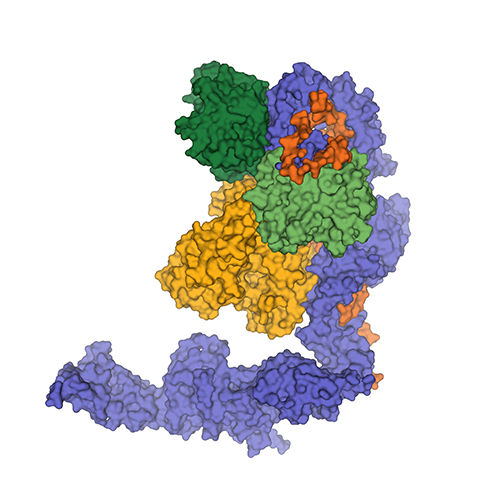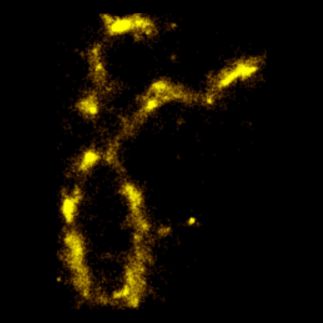Feeding RNAs to a molecular shredder
Much in the same way as we use shredders to destroy documents that are no longer useful or that contain potentially damaging information, cells use molecular machines to degrade unwanted or defective macromolecules. Scientists of the Max Planck Institute (MPI) of Biochemistry in Martinsried near Munich, Germany, have now decoded the structure of a protein complex (Ski complex) which plays an essential role in the process of degrading ribonucleic acids (RNAs). “The Ski complex we investigated feeds RNA molecules to the degradation machinery,” says Felix Halbach, scientist at the MPI of Biochemistry.

The ski complex plays an important role in the quality management of the cell.
Grafic: Felix Halbach © MPI of Biochemistry
RNAs are ubiquitous and abundant molecules with multiple functions in the cell, such as allowing the translation of the genomic information into proteins. Any errors that occur during the synthesis of RNA molecules or unwanted accumulation of RNAs can be harmful for the cell. The elimination of defective RNAs or of RNAs that are no longer needed is therefore a key step in the metabolism of a cell. This task is carried out by a protein complex called Exosome, one of the research objects in the department “Structural Cell Biology” headed by Elena Conti. The molecular mechanism of how the Exosome is regulated, however, is not very clear yet.
The Max Planck scientists have now elucidated the atomic structure and the operating mechanism of a protein complex (Ski complex) which is involved in the activation of the cytoplasmic Exosome. The Ski complex contains several subunits and can be found in all eukaryotes – from yeast to humans. “We could show that the Ski complex and the Exosome interact directly and that they jointly form a channel for the RNA which is supposed to be degraded,” says Felix Halbach. Like DNA, RNA molecules are often folded. To be degraded by the Exosome, RNA molecules have to be unfolded first – this task is executed by the Ski complex. The unfolded RNA molecules can then be guided through the joint channel to the Exosome. “The Ski complex feeds RNA molecules to the Exosome,” explains the biochemist.
The results also reveal additional parallels between the Exosome and the Proteasome. The Proteasome is the protein complex responsible for the degradation of proteins in a cell. “It becomes clear that these two complexes are not only structurally and functionally similar,” says Elena Conti, “also their regulatory subunits work in a similar manner.” They unwind RNA molecules or, respectively, proteins and guide them to the active centers of the specific degradation machinery.
Original publication
Most read news
Original publication
Halbach, F., Reichelt, P., Rode, M. and Conti, E.: The yeast Ski complex: Crystal structure and substrate channeling to the RNA exosome. Cell, August 15, 2013
Organizations
Other news from the department science

Get the life science industry in your inbox
By submitting this form you agree that LUMITOS AG will send you the newsletter(s) selected above by email. Your data will not be passed on to third parties. Your data will be stored and processed in accordance with our data protection regulations. LUMITOS may contact you by email for the purpose of advertising or market and opinion surveys. You can revoke your consent at any time without giving reasons to LUMITOS AG, Ernst-Augustin-Str. 2, 12489 Berlin, Germany or by e-mail at revoke@lumitos.com with effect for the future. In addition, each email contains a link to unsubscribe from the corresponding newsletter.





















































